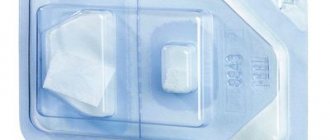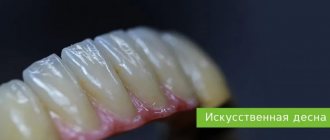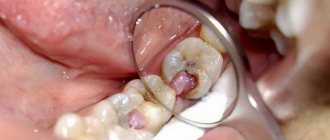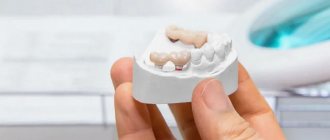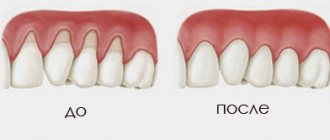Implantation, the most successful and effective method of restoring a natural smile, is constantly being improved, as is dental treatment in general. Patients are offered innovative techniques that provide better results or reduce the duration and cost of treatment. One of the major achievements in recent years has been the barrier membrane, which is installed in conditions of bone tissue deficiency.
Alveolar ridge atrophy is almost inevitable in people who require implantation. Some people delay therapy for a long time, which is why the bone has time to dissolve, while others have congenital structural features of the jaw apparatus. In any case, performing dental implantation in the event of atrophic phenomena in the bone tissue becomes impossible. Such an error threatens the following adverse consequences:
- Loosening, retraction or even loss of the implant (sometimes its loss is quite traumatic, involving the patient’s bone tissue);
- Impossibility of performing bone grafting in the future due to excessive thinning of the bone (any intervention risks fractures).
Moreover, jaw bone resorption is so seriously detrimental to the patient that even without implantation, bone grafting remains a necessary surgical procedure.
Gradually progressive atrophy leads to the fact that the face becomes asymmetrical and ugly: wrinkles worsen, the functioning of facial muscles is disrupted, and so on. The chewing function of the jaws is significantly affected, which is why patients eat poorly and have problems with the gastrointestinal tract. In advanced situations, speech and swallowing are noticeably impaired, and breathing movements are less likely to suffer. Therefore, bone grafting with additional installation of a barrier membrane must be performed immediately after the problem is detected.
Bone grafting is a solution to the problem of atrophy
For quite a long time, bone grafting has been recognized as the most effective method of restoring the width and height of the alveolar process. The technique is constantly modified and becomes safer and less traumatic. In addition, dentists are trying to achieve conditions under which simultaneous implantation will be possible.
There are several basic bone grafting techniques:
- Sinus lift. Restoration of bone volume in the upper jaw in the area of the projection of the bottom of the maxillary sinus. The operation is performed more often than others, since it is here that bone resorption is predominantly observed. The essence of the surgical intervention is that the dentist, in one of the ways (closed or open), gains access to the mucous membrane of the maxillary sinus. He disconnects part of the membrane from the periosteum, and fills the resulting cavity with prepared material of natural or synthetic origin.
- Splitting of the alveolar ridge. An effective technique for correcting the width of any jaw. First, the alveolar ridge is cut and spread apart, after which the graft is placed inside. The advantage of the technique is that the structure is immersed in the spongy tissue of the jaw, where regeneration and replenishment of the bone block is actively taking place. That is why the use of expensive osteoplastic materials is not required here.
- Guided tissue regeneration. This type of bone grafting includes two components: a graft and a collagen membrane. These two components, interacting with each other, help restore the deficit of both the width and height of the alveolar process in any part of the jaws. The technique is rarely used with simultaneous implantation.
- Bone block grafting. This technique involves the use of a natural, preferably autogenous, graft, which is placed on the area where implantation is planned and where the bone tissue has atrophied. The disadvantage of this technique is that the graft is connected to an area of the bone where there are no blood vessels. Engraftment in such conditions occurs slowly.
Patients tend to be afraid of bone grafting, since it is a full-fledged surgical intervention on the teeth. However, all manipulations are carried out under local or general anesthesia, so they do not cause any discomfort. The risk of complications with this manipulation is minimal, and the benefits are undeniable. Even if the atrophy of the alveolar process does not allow immediate implantation, and patients have to wait six months for the implants to take root, it is still better to give preference to bone grafting rather than alternative methods of tooth restoration. Moreover, in modern conditions there are many designs that increase the benefit and effectiveness of bone grafting, for example, fixation of a barrier membrane.
What are barrier membranes?
The barrier membrane is one of the most modern and successful inventions in dental practice. Such designs are actively used in almost all surgical interventions. Barrier membranes for bone grafting during implantation can prevent atrophic phenomena in the alveolar process and contribute to the immediate successful fixation of artificial roots. The membrane affects the regenerative abilities of the bone, increasing them, does not allow osteoclasts that are dangerous to bone cells to enter, and minimizes the risk of penetration of pathogenic agents. Thanks to the barrier membrane, graft engraftment is accelerated, as is the overall treatment of the patient.
The membrane for bone grafting is a very thin and fairly elastic plate that is attached to the bone with titanium pins. In this way, the gums are separated from the bone material during the formation of natural jaw tissue.
Types of membranes
There are two types of barrier membranes that are widely used in dentistry:
- Resorbable. This structure gradually dissolves. It does not require separate removal, that is, additional surgical intervention, which means it causes less trauma.
- Non-resorbable. Membranes of this type do not dissolve on their own, which is why patients need an additional stage of treatment - removal of the structure. In most cases they are made of titanium. Such membranes are attached in the presence of a serious deficiency of bone tissue, filled with granules of osteogenic material. Once the alveolar bone and soft gum tissue have recovered, the barrier membrane is removed.
The dentist independently selects the optimal membrane for a specific clinical case. He must take into account that resorbable structures do not fix the grafts well enough, so they are used only for minor atrophies.
Why and when to install a membrane?
The barrier membrane performs several functions at once that contribute to the patient’s recovery. The design reliably fixes the osteogenic material in the place and position where the dentist installed it. Also, the membrane does not allow bone-destroying cells - osteoclasts - to pass through, which are normally responsible for the balance of metabolic processes in the alveolar process. An additional function of the membrane is protection against infection. In the case of sinus lifting, the membrane is installed under the bottom of the maxillary sinus and reduces the risk of penetration of osteoplastic material into the sinus through perforations in the mucous membrane.
Indications for use of barrier membrane:
- Preventing the resorption of bone tissue in the alveolar ridge after tooth extraction (if treatment is not performed immediately and the patient will have to remove the load from this area for some time);
- Any type of bone grafting (retention of bone grafting material);
- Dental implantation with one-stage bone grafting (reinforcing function);
- Performing flap surgical interventions for periodontitis.
Barrier membranes appeared not so long ago, and therefore their cost remains high. Dentists make decisions based on the patient's financial status and may sometimes refuse to use them. In general, the use of a barrier membrane allows for better control of the outcome of bone grafting and reduces the likelihood of adverse treatment outcomes.
Indications and contraindications for the use of plasma lifting
Indications:
- increasing the rate of tissue healing during sinus surgery and bone addition;
- recession plastic;
- treatment of periodontal diseases;
- activation of growth factors in bone cells after tooth extraction;
- implantation simultaneously with the introduction of bone material;
- various surgical interventions.
Contraindications:
- malignant neoplasms;
- systemic diseases of the blood system that do not allow plasma to be isolated or used effectively;
- decreased immunity;
- diseases in the acute stage;
- taking antibiotics;
- mental illness.
How to install a barrier membrane?
The innovative method of using a barrier membrane requires certain experience from the dentist, as well as clear knowledge of the technique of performing the stage. The structure is fixed as follows:
- Performing local or general anesthesia with the addition of sedatives (the last point is not always necessary);
- An incision in the outer soft tissues of the gums and moving them away from the bone of the alveolar process;
- Replenishment of the required amount of bone tissue using one of the previously selected methods;
- Fixing a modern structure made of collagen or metal with special titanium screws to adjacent teeth or to the jaw bone itself;
- Repositioning the soft gum tissue and securing it with surgical sutures.
When using a membrane that does not dissolve, after a certain time almost all steps are repeated to remove the structure.
A prerequisite for the patient’s successful recovery is careful oral care in the postoperative period. A person must maintain personal oral hygiene and follow all recommendations of the dentist. It is also important to quit smoking a few days before surgery and for the entire rehabilitation period.
Preparation for plasma lifting
To carry out the innovative dental method of plasma lifting at a reasonable price, Implantmaster in Moscow has all the necessary latest equipment. Before carrying out medical manipulations, a thorough visual and instrumental examination of the oral cavity is carried out at the consultation. Next, the specialist will order an x-ray.
We perform cone beam computed tomography. The pictures are more accurate, and the Rg radiation is even less. Thanks to this, the most accurate diagnosis can be made.
Our doctors use a Labomed Magna dental microscope to thoroughly examine the condition of teeth and surrounding tissues. An examination is also carried out to determine contraindications to surgery. If no contraindications are identified, then a treatment plan is drawn up.
The doctor answers all the patient’s questions. He explains in detail the surgical procedure and schedules an appointment. To undergo the procedure as comfortably and correctly as possible, you should perform preparatory measures before performing plasma lifting:
- pre-carry out professional cleaning of the oral cavity;
- 7 days before the procedure you should not drink alcohol, heavy and spice-rich foods, or hot drinks;
- minimize smoking;
- increase the amount of water consumption to 2 liters per day;
- before treatment, do not take painkillers and drugs that affect blood clotting;
- Do not eat before the procedure.
These recommendations will allow you to carry out the upcoming procedure most effectively. And after the operation, you must follow all the specialist’s instructions.
Is it possible to do without a barrier membrane?
Since fixing a barrier membrane is not cheap, many patients are interested in the question of alternatives to this design. In general, the cost of different types and brands of such dental material varies significantly. But if surgical intervention requires the use of a serious and reliable design, then it is not recommended to purchase a cheap analogue, because it still will not bring the expected result.
Performing bone grafting with fixation of barrier membranes is not available to all dental clinics. Refusal to use such structures will increase the likelihood of any complications, but in general will not affect the course of the operation and the recovery stage. But if it is possible to use a barrier membrane for bone grafting during implantation, then it is better to agree to its installation.
Benefits of Collagen Membrane, Genoss
- the minimum period of epithelization in the open state is only 2-3 weeks (!),
- size (thickness 0.3 mm),
- resorbability in 8-10 months,
- rigidity is a guarantee of excellent barrier function and reliable stabilization of bone material,
- ease of use.
The excellent characteristics of the Genoss membrane have already been appreciated by many dentists, so today you can inexpensively buy a Genoss collagen membrane in the Dental Market online store.
The price of the Genoss collagen membrane at Dental Market is more than acceptable, especially considering the real opportunity to receive free consultation from a specialist, assistance in placing an order and fast delivery.
Call Dental Market by phone 8 (495) 118-76-20
.
Online store "Dental Market" - flexible prices, quick help in any situation!
